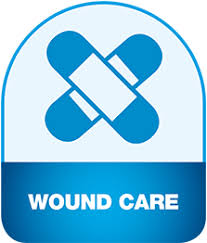
Rachael L Moses
Cardiff University
Title: Stimulation of keratinocyte wound healing responses and re-epithelialization by novel epoxy-tiglianes via protein kinase C activation
Biography
Biography: Rachael L Moses
Abstract
Novel epoxy-tiglianes, EBC-46 and EBC-211, are sourced from seeds of the Fountain’s Blushwood Tree, indigenous to Queensland. EBC-46 possess potent tumouricidal properties, through classical PKC activation, and is under development by our industrial partner, QBiotics Ltd., as a human and veterinary anti-cancer pharmaceutical. In clinical studies, EBC-46 also
stimulated exceptional dermal healing, manifested as accelerated wound re-epithelialisation, closure and minimal scarring. This work describes epoxy-tigliane effects on keratinocyte wound healing responses and their underlying mechanisms of action. Immortalized human epidermal keratinocytes (HaCaTs) were treated with EBC-46 or EBC-211 (0-10μg/ml). Cell cycle progression/proliferation were assessed by FACS analysis and MTT assay. HaCaT migration was assessed using in vitro scratch wound assays. Global gene expression changes induced by epoxy-tiglianes were quantified by Microarray analysis, with differentially expressed genes confirmed by protein level analysis. As epoxy-tiglianes mediate responses via classical protein
kinase (PKC) activation, mechanistic studies were performed with BIM-1 (pan-PKC), Gö6976 (classical-PKC) and LY317615 (PKC-βI/PKC-βII) inhibitors. Western blotting confirmed phospho-PKC activation following epoxy-tigliane treatment. Both epoxy-tiglianes induced significant HaCaT cell cycle progression and proliferation; and also promoted significant HaCaT
scratch wound closure. Microarray analyses identified key genes differentially expressed in EBC-46/EBC-211-treated HaCaTs, which contribute to their stimulatory effects on keratinocyte proliferation and migration. Enhanced proliferative and migratory responses were significantly abrogated by BIM-1 and Gö6976, although LY317615 exhibited minimal inhibitory effects. PKC
activation increased following epoxy-tigliane treatment. Such findings explain the enhanced re-epithelialization responses in epoxy-tigliane-treated skin; and provide justification for their translational development as novel therapeutics for impaired wound re-epithelialisation.

